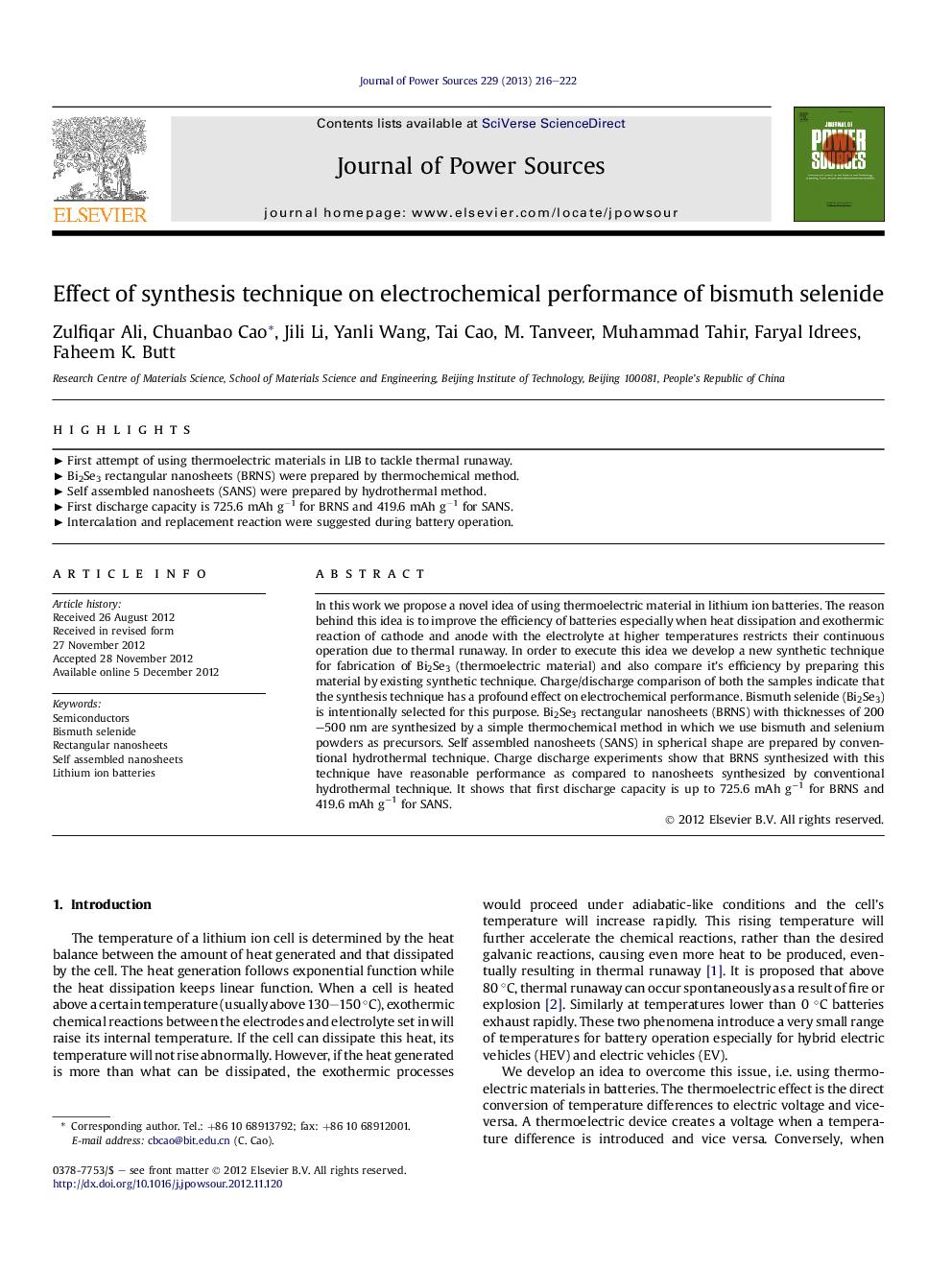| Article ID | Journal | Published Year | Pages | File Type |
|---|---|---|---|---|
| 1288258 | Journal of Power Sources | 2013 | 7 Pages |
In this work we propose a novel idea of using thermoelectric material in lithium ion batteries. The reason behind this idea is to improve the efficiency of batteries especially when heat dissipation and exothermic reaction of cathode and anode with the electrolyte at higher temperatures restricts their continuous operation due to thermal runaway. In order to execute this idea we develop a new synthetic technique for fabrication of Bi2Se3 (thermoelectric material) and also compare it's efficiency by preparing this material by existing synthetic technique. Charge/discharge comparison of both the samples indicate that the synthesis technique has a profound effect on electrochemical performance. Bismuth selenide (Bi2Se3) is intentionally selected for this purpose. Bi2Se3 rectangular nanosheets (BRNS) with thicknesses of 200–500 nm are synthesized by a simple thermochemical method in which we use bismuth and selenium powders as precursors. Self assembled nanosheets (SANS) in spherical shape are prepared by conventional hydrothermal technique. Charge discharge experiments show that BRNS synthesized with this technique have reasonable performance as compared to nanosheets synthesized by conventional hydrothermal technique. It shows that first discharge capacity is up to 725.6 mAh g−1 for BRNS and 419.6 mAh g−1 for SANS.
► First attempt of using thermoelectric materials in LIB to tackle thermal runaway. ► Bi2Se3 rectangular nanosheets (BRNS) were prepared by thermochemical method. ► Self assembled nanosheets (SANS) were prepared by hydrothermal method. ► First discharge capacity is 725.6 mAh g−1 for BRNS and 419.6 mAh g−1 for SANS. ► Intercalation and replacement reaction were suggested during battery operation.
